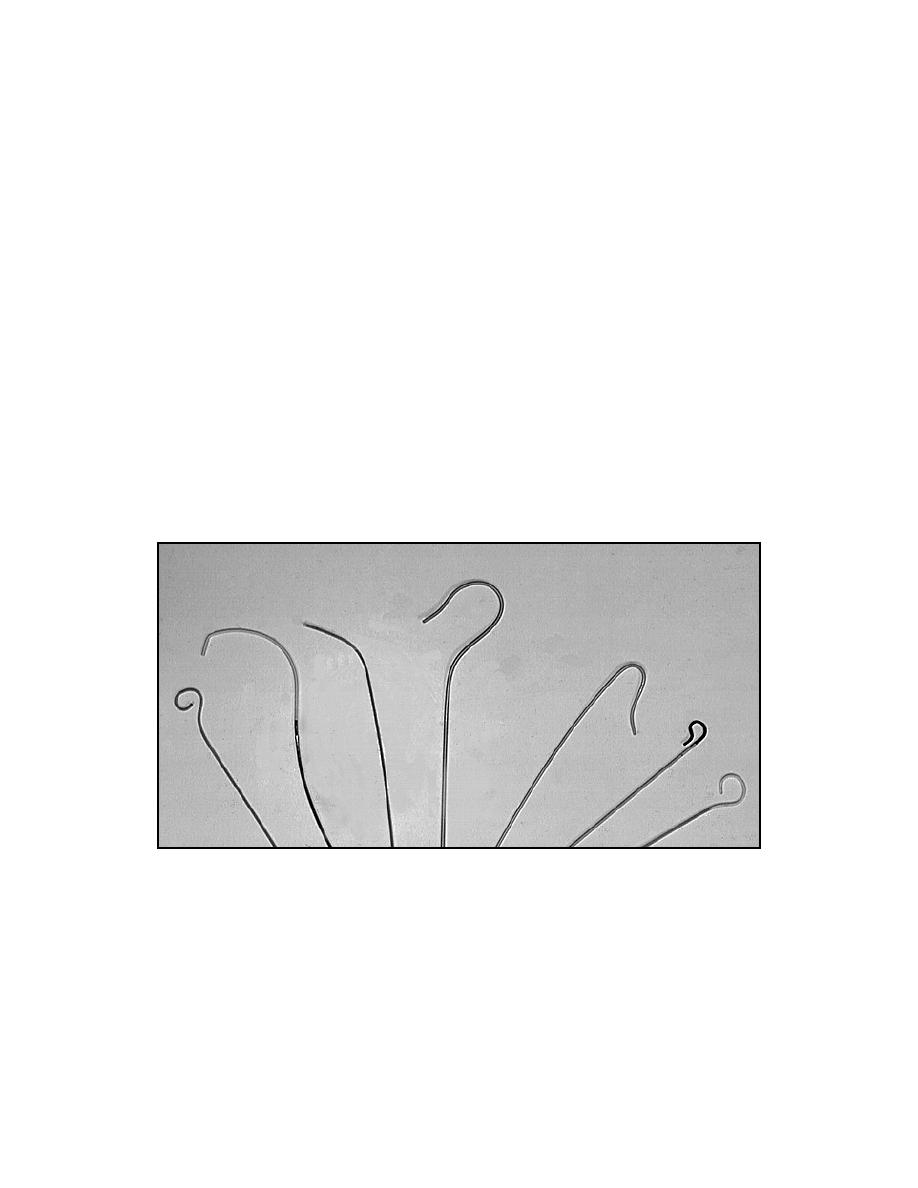
(3) Sheath needles are a variation on the arteriographic design with a
flexible plastic sheath fitted over the needle slightly shorter than the bevel. Once the
lumen is encountered after insertion, the needle is withdrawn and the sheath remains.
This can be threaded into the vessel. The needle should not be reinserted into the
sheath except under direct vision since the needle can cut the plastic sheath.
b. Catheters. If a catheter is to be introduced, the decision as to type will be
made by the examiner. The first cardiac catheters were an adaptation of ureteral
catheters. A relatively thin-walled, more supple design was forthcoming. There are
many different types and shapes of catheters. The barium-loaded polyethylene catheter
(ductile and malleable in water, steam, or air at 75C) allows the operator to readily form
a tip design and catheter shape or change design to fit the anatomic circumstances (see
figure 3-6). Factory preformed catheters are available in sterile disposable form. This
type of catheter will perform ninety percent of clinical angiographic studies. Table 3-1
shows characteristics of some of the available catheter materials.
c. Injection Apparatus. An automatic injection apparatus is used. The
automatic type is set and can be adjusted to control the rate of injection and
automatically initiate the exposure at a predetermined time after the commencement of
the injection.
Left to right: Pigtail, cobra, multipurpose, headhunter, Simmons,
SOS-OMNI, tennis-racquet.
Figure 3-6. Peripheral angiographic catheters.
MD0959
3-11


 Previous Page
Previous Page
